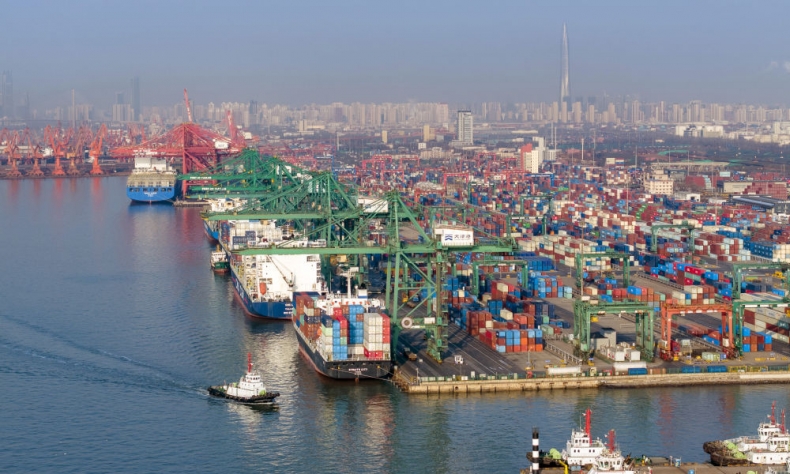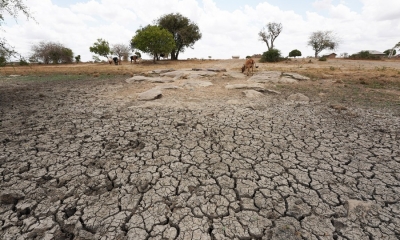China Defies Predictions of Economic Decline

China has always defied doom merchants in the past, those predicting an end to sustained economic growth and rising living standards. There is no reason to suppose that it will not continue to do so.
China is the oldest living civilization but, today, it is more often recognized for its sustained economic growth.
By becoming the “world’s production center,” it transformed from one of the poorest countries to emerge as the second-largest economy. This is the “New China,” but further transformation is already making this image of China seem old.
Nevertheless, almost as soon as China nudged Japan into the third place in the ranking of large economies in 2010, the respected international magazine The Economist asked what country the new “New China” would be, that is, which state would replace China as the fastest-developing country.
It has been a question repeatedly asked, although the answer is simple. As Chinese President Xi Jinping stated during his address at the Asia-Pacific Economic Cooperation CEO Summit in San Francisco last November, “The ‘next China’ is still China.” Because China continues to reinvent itself, it remains a uniquely powerful driver of sustainable global economic growth.
The question that The Economist posed was partly stimulated by labor legislation introduced in China in January 2008 that gave workers more contractual rights. The proposition was that with more rights, China’s labor costs would increase, and it would lose competitiveness. The authors cited research conducted a few years earlier when labor costs in China were just 2.7% of those in the United States and noted that workers’ compensation had been rising by more than 9% per year in terms of U.S. dollars. They also pointed to an aging population that would end the supply of cheap labor.
The reality that transpired was that wages continued to increase. Indeed, the British consultancy, Oxford Economics, estimates that wages in China’s manufacturing sector rose by a staggering 1,700% in U.S. dollar terms in the 25 years to 2022. This brought about a transformation in the living standards of much of China’s population.
However, China’s economic growth has continued apace, with an average annual GDP growth rate of 6.8% between 2010 and 2023, thus helping to lift the world out of the Great Recession and keeping global growth above 3% per annum. Net direct inward investment in China similarly continued, reaching the highest-ever level of more than $330 billion in 2021.
More than a decade after The Economist‘s article, some Western commentators are again suggesting that China is “wobbling” and that other emerging economies – perhaps India or Brazil – might snatch its crown. Once again, the focus is typically on wage rates, with those of Chinese production workers now being higher than in countries such as Brazil, Thailand, Malaysia, and Vietnam; indeed, they are five times higher than in Mexico and India.

From the perspective of Western manufacturers and investors, the imperative is choosing the country with the lowest labor costs, which, they argue, “is very important to keep costs low.” The fact that China’s wages have risen is also seen as a potential cause of a new round of inflation as that would make goods imported from the country more expensive.
Moreover, China aspires to achieve common prosperity – that is, as President Xi Jinping explains, to transform the current pyramid-shaped income distribution into the form of an olive. This has been singled out as a threat by Schroders, a global multinational asset management company. Its suggestion is that common prosperity threatens to increase China’s wages and, thus, the prices of its goods. This, in turn, as the reasoning continues, will create global inflation previously held in check by the cheap Chinese exports.
However, historically Chinese wage increases have not triggered global inflation because they have been facilitated by productivity increases. Further advances in green technology and the digital industries may yield additional gains in productivity and more disposable income.
Common prosperity will be achieved through a more progressive distribution of the benefits of future growth. This is likely to enhance consumer demand, creating more opportunities for business. Many foreign capitalist entrepreneurs, while viewing improvements in Chinese workers’ wages as a potential problem, are already eager to sell goods to China’s increasingly prosperous middle-income group.
If China’s sustained growth is coming under threat, it is primarily due to the legacy of the COVID-19 pandemic and a global retreat toward protectionism. The latter is illustrated by the U.S. government’s “Section 301” tariffs on Chinese imports, imposed by President Trump but retained by President Biden.
However, despite these impediments to growth, Kristalina Georgieva, managing director of the International Monetary Fund, speaking at the China Development Forum on March 24, 2024, predicted that with the “strong post-COVID rebound in 2023,” “China will continue to be a key contributor to global economic growth.” She drew attention to the level of AI preparedness, the well-developed digital infrastructure, China’s lead in the deployment of renewable energy, and its rapid progress in green mobility.
China can also promote growth through monetary and fiscal means. Low rates of taxation leave it scope to raise additional revenue. It is similarly well-placed proactively to respond to an aging population while enhancing social protection to achieve common prosperity.
As to the prospect of another emerging economy challenging China, Jason Hsu, chairman of the California-based Rayliant Global Advisors, concludes that “no country in the near term will match China’s manufacturing capabilities…especially for high-end and value-added products.” His reasoning has much to do with China’s scale and its unique economy integrating market and government.
China has always defied doom merchants in the past, those predicting an end to sustained economic growth and rising living standards. There is no reason to suppose that it will not continue to do so.
 Facebook
Facebook
 Twitter
Twitter
 Linkedin
Linkedin
 Google +
Google +







